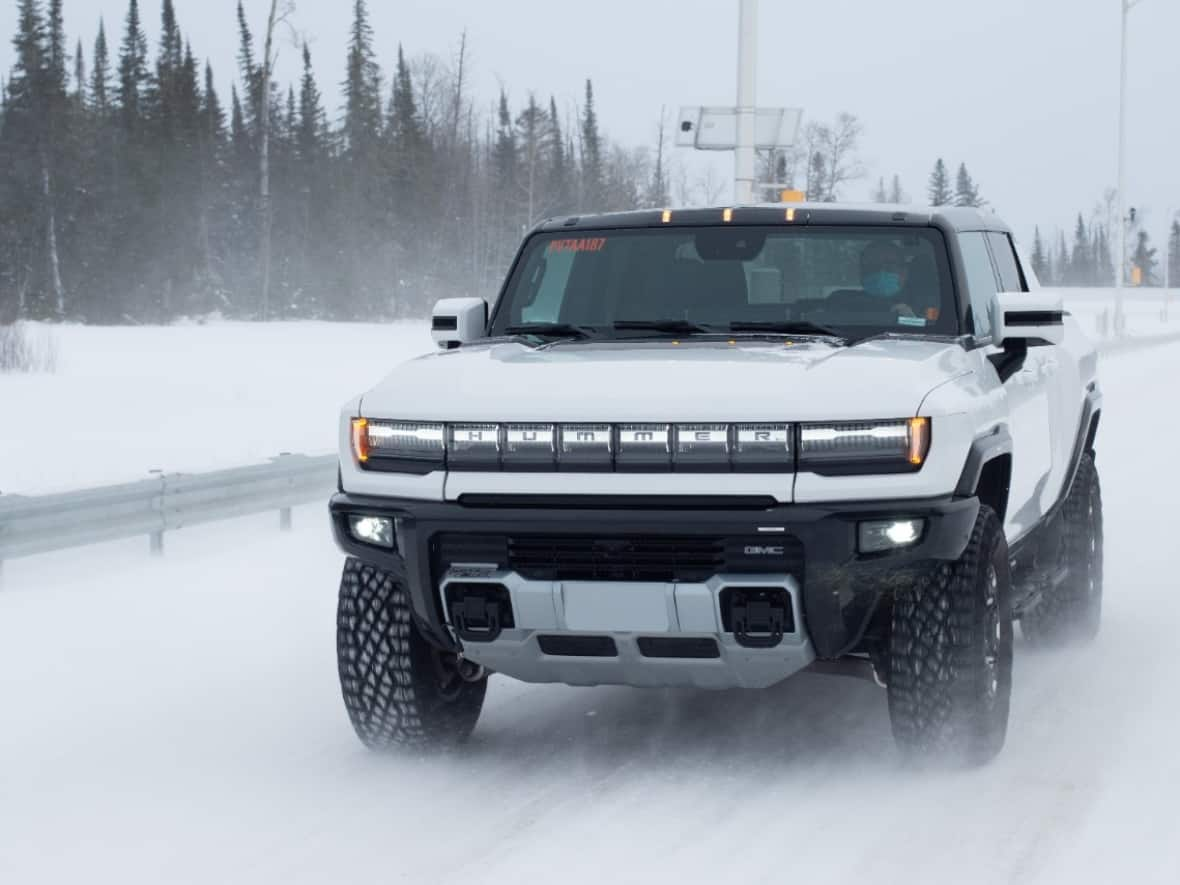Electric vehicles lose up to 30% range when temperatures dip below freezing, study finds

Electric vehicles (EVs) can lose up to 30 per cent of their range in freezing temperatures, according to a U.S. firm that tested range loss in 7,000 cars.
Seattle-based Recurrent measured range loss in 7,000 EVs at temperatures between –7 C and –1 C.
At the low end, the Jaguar I-Pace had an estimated range loss of three per cent, while the Volkswagen ID.4 had a 30 per cent range loss at those temperatures.
Liz Najman, a researcher with Recurrent, said EVs lose range during the winter because of the energy it takes to heat the cabin so it's comfortable for the driver and passengers.
Because electric motors are more efficient than gas engines, they can't draw on wasted heat to warm up the inside of the vehicle.
"If you've ever touched the hood of a gas car, you know it's really hot after it's been driving," Najman said.
"And that's because gasoline engines are super inefficient, and so they create all of this waste heat. And when you turn the car on in a gas car, you just funnel all of that heat from the engine to the cabin."
Importance of charging infrastructure
EVs have to generate heat in other ways, which means using more energy from the battery that won't go toward range. Some vehicles, however, use more efficient heat pumps to get the cabin warm, which means there's more energy left over from the battery to propel the vehicle forward.

Steve Holmik of Sudbury, Ont., drives a Tesla Model Y and said he can lose up to 50 per cent of his range if outside temperatures are very cold.
"Around town, the range impact is negligible," Holmik said.
"It's nice and warm when you get inside. It's no different to essentially driving a gas vehicle."
Holmik said the winter range loss could be an issue for people who drive long distances in the winter, especially if they travel in areas further north, where charging infrastructure is lacking.
"Especially once you get north of Sudbury, the infrastructure just isn't there," he said.
"Like if you go to Timmins, you'd be lucky to find a Level 2 charger."
But Holmik said he can greatly improve his winter range by preheating his car while it's still plugged in at his house or using a fast charger. He said he can improve range loss by up to 20 per cent by doing that.
Some vehicles, like Teslas, also have a feature called battery preconditioning, where the car will warm up the battery before reaching a charger, which speeds up charging times.

Cold-weather testing
General Motors tests its new vehicles at a 200-acre (81-hectare) facility in Kapuskasing, Ont., that it calls the Kapuskasing proving grounds.
Josh Walton, operations manager for the proving grounds' engineering group, said General Motors tests its upcoming slate of EVs the same way as its traditional gas-powered cars.
"Our customers expect the EVs to perform at the same rate as the ICE [internal combustion engine] vehicles do," Walton said.
"So we test them accordingly."
With feedback from his team, Walton said General Motors is always improving how its EVs perform in cold weather.
"GM is constantly finding new and innovative ways to improve our battery range in extreme cold weather."


